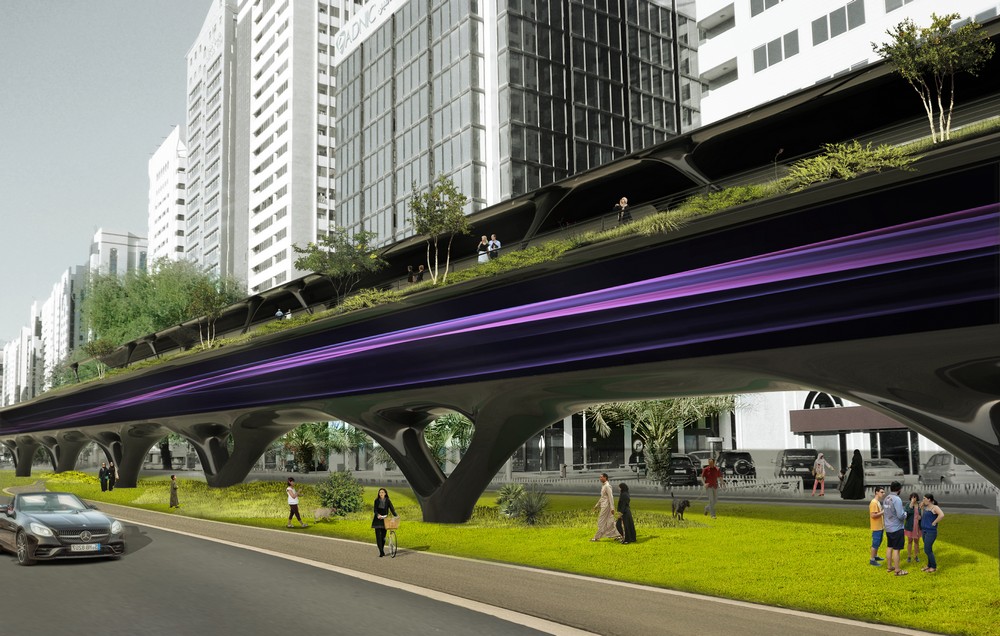How Does Architecture Incorporate Principles Of Adaptive Urbanism?

Living in a city is an exciting experience. With urbanization taking place at a rapid pace, there are a lot of factors to take into consideration during the development and planning of a city or town. Every city is unique and comes with its own set of challenges. That’s where the concept of Adaptive Urbanism comes into play.
What is Adaptive Urbanism?
Adaptive Urbanism refers to the concept of designing and planning a city or town which can adapt to the changing needs of its residents. It aims to create flexible, adaptable and sustainable urban environments which promote public health, safety and wellbeing while also minimizing negative impacts on the environment and local ecosystem.
Why is Adaptive Urbanism important?
Adaptive Urbanism is important for a wide variety of reasons, including but not limited to:
- Resilience: Adaptive urbanism ensures that the city or town can deal with changes and adapt to them with ease.
- Sustainability: The concept of Adaptive Urbanism emphasizes the importance of sustainability and the need to protect the environment and promote renewable energy sources.
- Community Development: Adaptive Urbanism aims to promote and create cohesive communities that are well-connected and offer a higher quality of life for residents.
- Public Health: Adaptive Urbanism promotes a more active lifestyle for residents by focusing on walkability, green spaces, and access to public transportation.
How can we Implement Adaptive Urbanism?
Implementing Adaptive Urbanism involves a variety of strategies and techniques, including:
1. Mixed Land Use Development
The creation of mixed-use developments that include residential, commercial and green spaces is an important component of Adaptive Urbanism. This approach promotes walkability and accessibility, reduces car dependency and promotes social interaction.
2. Green Infrastructure
Green infrastructure, such as parks, green roofs, and green walls, help to improve air and water quality while also mitigating the effects of climate change. Implementing green infrastructure strategies in urban environments can improve public health and reduce energy consumption.
3. Sustainable Mobility
Implementing sustainable transportation options, such as cycling paths, pedestrian walkways, and public transportation, is an important aspect of Adaptive Urbanism. Encouraging people to choose more sustainable transportation modes can reduce traffic congestion, air pollution, and carbon emissions while also promoting physical activity.
4. Urban Agriculture
Creating urban agriculture spaces such as community gardens, rooftop gardens, and vertical farms helps to promote food security, reduce food waste, and provide green spaces in urban environments. Urban agriculture also promotes healthy eating and community development.
5. Innovative Use of Technology
New technologies such as smart buildings, renewable energy sources, and sensing systems can help to improve the efficiency of urban systems and reduce energy consumption. Implementing these technologies in urban environments can contribute to a more sustainable and adaptive city.
6. Community Involvement
Community involvement is essential in implementing Adaptive Urbanism. Engaging residents and community stakeholders in the planning process can ensure that the city or town is designed to meet the needs of its residents. Furthermore, involving the community in decision-making processes can create a sense of ownership and responsibility.
FAQs about Adaptive Urbanism
1. Is Adaptive Urbanism only applicable in large cities?
No, Adaptive Urbanism can be applied to cities, towns, and even neighborhoods of any size. It is a flexible and adaptable concept that can be scaled and customized to meet the needs of different communities.
2. How can we finance Adaptive Urbanism?
Adaptive Urbanism requires significant investments in infrastructure, technology, and planning. Financing can be obtained through a mix of public and private funding, grants, philanthropy, and partnerships.
3. How can we measure the success of Adaptive Urbanism?
The success of Adaptive Urbanism can be measured through a wide variety of indicators, including public health outcomes, economic growth, social equity, environmental quality, and public satisfaction.
4. Who should be involved in the planning and implementation of Adaptive Urbanism?
The planning and implementation of Adaptive Urbanism require a collaborative effort involving a wide range of stakeholders, including city planners, government agencies, community-based organizations, businesses, and residents.
5. Can we retrofit existing urban areas to meet Adaptive Urbanism standards?
Yes, retrofitting existing urban areas to meet Adaptive Urbanism standards is possible. It requires a strategic and phased approach that takes into account the unique context and constraints of each urban area.
Adaptive Urbanism is an important concept that will shape the future of urban planning and development. By creating flexible and adaptable urban environments, we can create sustainable and livable cities that promote public health, safety, and wellbeing while minimizing negative impacts on the environment and local ecosystem.




Post a Comment for "How Does Architecture Incorporate Principles Of Adaptive Urbanism?"